6 Flower Shapes To Include In Your Flower Border For Bees
In creating a flower border for bees and pollinators, it's not only important to provide nectar and pollen through the seasons, you should ideally include a variety of different flower and petal shapes and types.
In this way, your flower border can provide for the differing needs of bees with long or short tongues and different flower preferences, as well as assist other pollinators.
6 Key flower shapes to include in your flower border for bees
Here is a guide to 6 key shapes to look out for.
1. Bell, funnel and tubular shaped florets
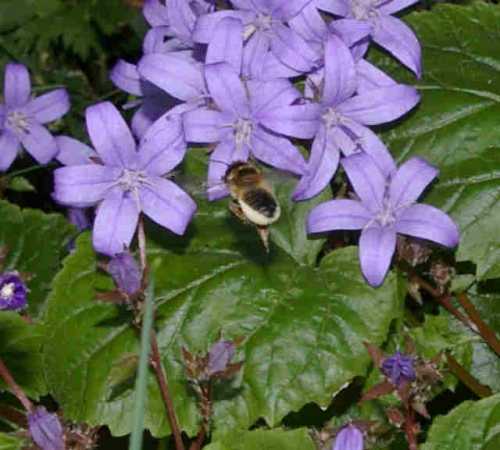 Leafcutter bee visiting bedding campanula
Leafcutter bee visiting bedding campanula
In this group are flowers such as campanulas, English bluebell, foxgloves and convolvulus.
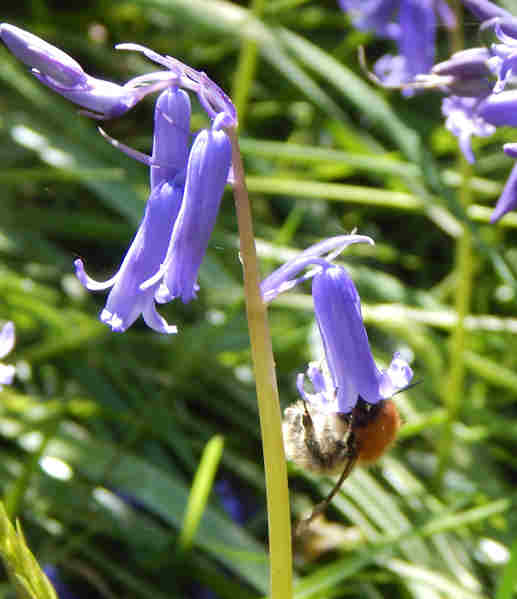 Bumble bee visiting English bluebell
Bumble bee visiting English bluebell2. Open flowers (bowl / dish-shaped blossoms)
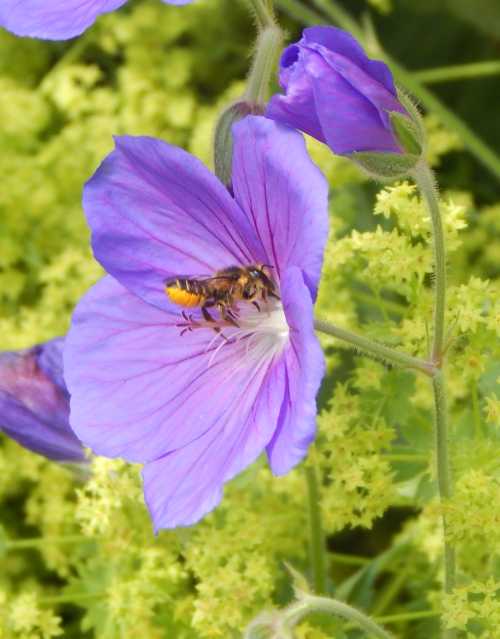 Leafcutter bee visiting geranium flower.
Leafcutter bee visiting geranium flower.
These include flowers such as geraniums, poppy, rosa rugosa, cherry blossom, brambles, and daisy-type members of the asteraceae family.
3. Brush type blossoms
In this group we have flowers such as willow catkins and ivy.
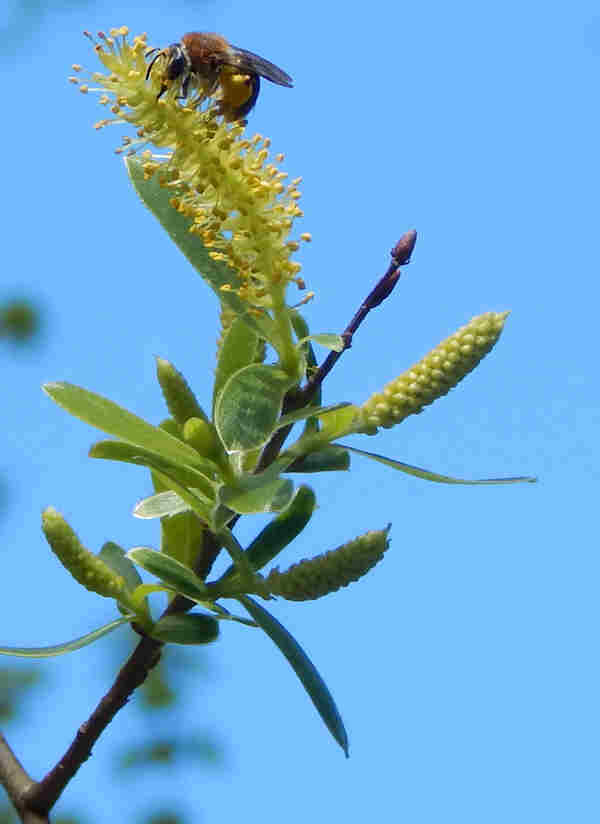 Willow catkins provide valuable food in early spring. Many beneficial varieties are available, including compact trees for small gardens.
Willow catkins provide valuable food in early spring. Many beneficial varieties are available, including compact trees for small gardens.
4. Gullet type blossoms
Deep flowers’ such as honeysuckle, iris, sage, snap dragon, Lamiaceae, such as Stachys
byzantina (lamb's ear) - a favourite of mine for attracting not only
bumble bee species, but also wool carders;
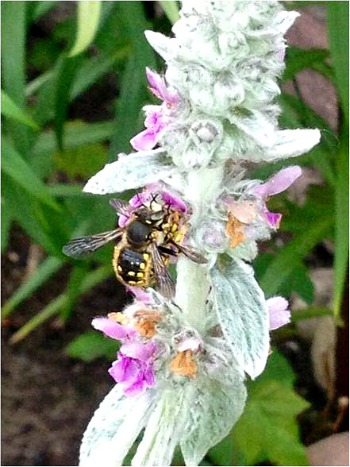 Above: Wool carder bee - Anthidium manicatum, on Stachys byzantina (lamb's ear)
Above: Wool carder bee - Anthidium manicatum, on Stachys byzantina (lamb's ear)
5. Flag type blossom
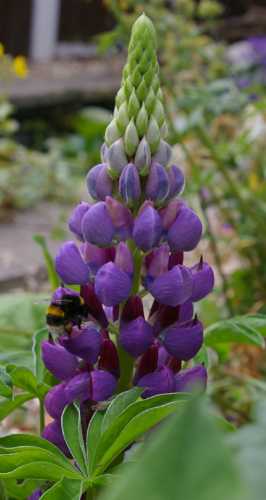 Lupine (lupin) is a member of the pea family and is especially popular with some bumble bee species.
Lupine (lupin) is a member of the pea family and is especially popular with some bumble bee species.
This group includes the pea family (Fabaceae), such as lupine, wisteria, beans, clover, bird’s foot trefoil; and restharrow.
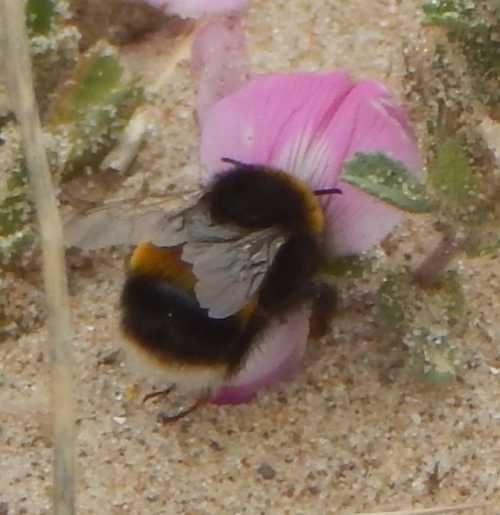 Bumble bee on restharrow.
Bumble bee on restharrow.
6. Tube type
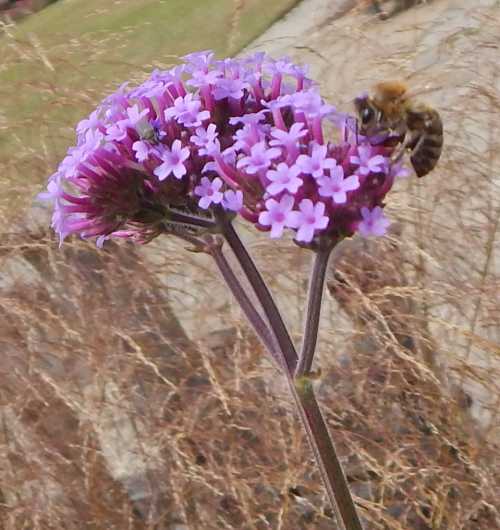 Honey bee feeding on the tubular florets of Verbena bonariensis.
Honey bee feeding on the tubular florets of Verbena bonariensis.Examples include verbena, buddleia, teasels, scabiosa, knapweed, hebe, heathers.
Some blossoms are a combination of bell and tube shape – such as viper’s bugloss.
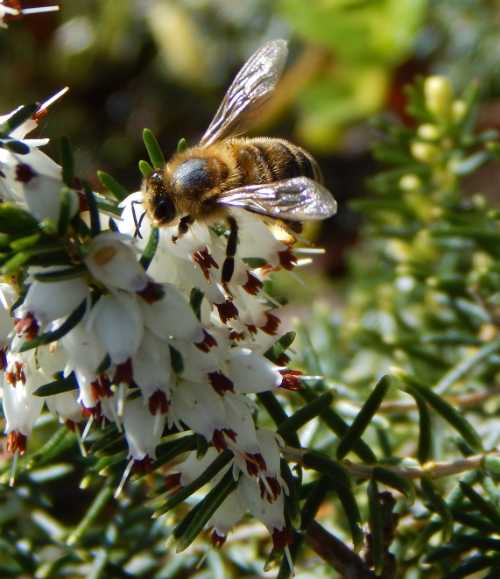 Honey bee foraging on early-flowering heather
Honey bee foraging on early-flowering heather
Why is this relevant?
There are some who believe that wildlife gardening literally means allowing the garden to become wild and unmanaged.
I suspect this comes from the general advice to wildlife gardeners: 'don't be too tidy' - and perhaps taking that advice to the extreme.
However, in my experience, leaving a garden to simply go wild will not always bring the best results in terms of attracting more wildlife and especially pollinators.
There are many factors to consider in such an approach. This is where careful selection of plants comes in, and consideration given to flower shape.
For most people with a garden - and especially a small plot, I believe it is far better to plan your garden with pollinators in mind if your aim is to assist them. I have tried the 'wild garden' approach, followed by the deliberate creation of flower borders with carefully selected plants. The planned approach has brought more wildlife - and especially bees - to the garden.
Images of flower borders for bees
Here are some wonderful examples of flower borders for bees, incorporating a variety of flower shapes.
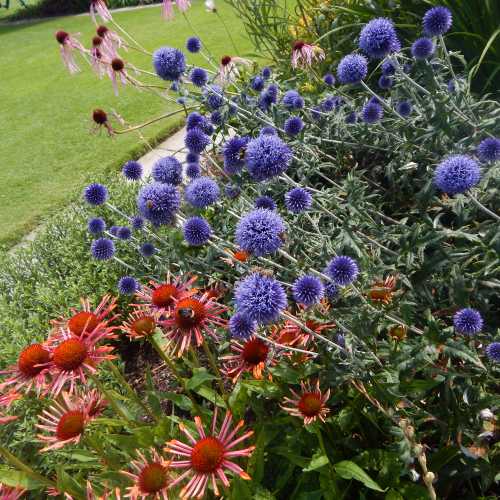 Coneflower and echinops in this flower border are perfect for pollinators.
Coneflower and echinops in this flower border are perfect for pollinators.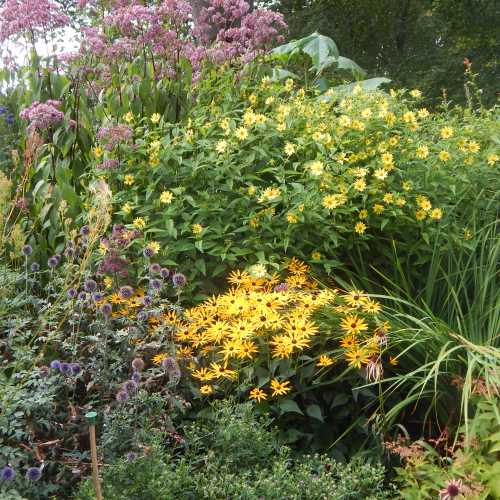 Helenium, Echinops, Rudbeckia and more in this varied early autumn pollinator border.
Helenium, Echinops, Rudbeckia and more in this varied early autumn pollinator border.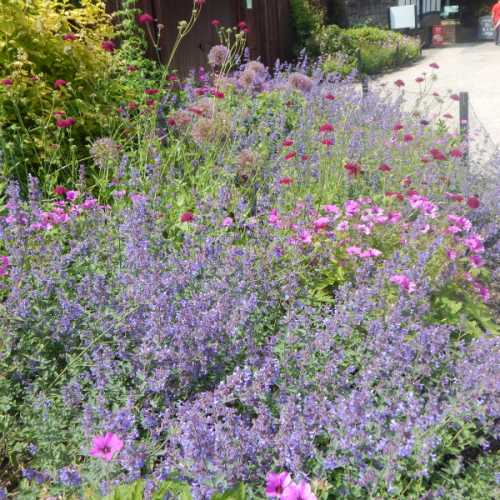 Mints, Geraniums, Alliums and Scabiosa provide a range of flower shapes for bees and pollinators in this border.
Mints, Geraniums, Alliums and Scabiosa provide a range of flower shapes for bees and pollinators in this border.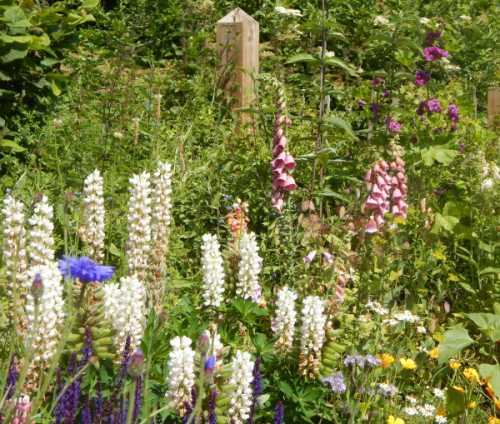 Lupins, Hollyhocks, Cornflower, California poppy, Salvias and a selection of umbellifers create an informal flower border for pollinators - especially bees.
Lupins, Hollyhocks, Cornflower, California poppy, Salvias and a selection of umbellifers create an informal flower border for pollinators - especially bees.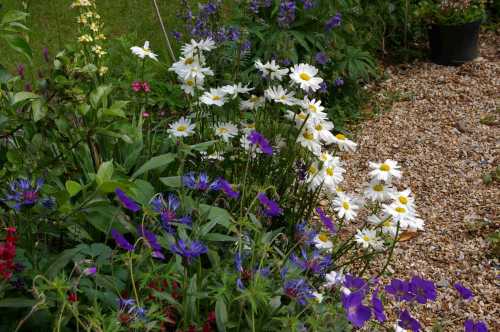 Daisies, Geranium, Cornflower, Polemonium in a small flower patch.
Daisies, Geranium, Cornflower, Polemonium in a small flower patch.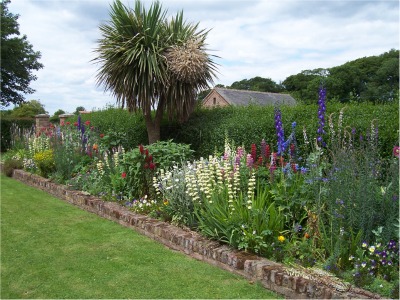 Delphiniums, lupins, alliums and more in this flower border - a magnet for bees and pollinators of all types.
Delphiniums, lupins, alliums and more in this flower border - a magnet for bees and pollinators of all types.
When creating your pollinator flower border, do remember....
- Plant in swathes – this means the gathering of nectar and pollen by
the bees and other pollinators can be undertaken more efficiently.
Less energy will be used for flying between flowers to find more nectar and pollen sources. Planting in swathes is also believed to create stronger visual cues for pollinators.
- If in doubt, remember you can rarely go wrong with wild flowers, herbs and cottage garden plants.
- Ensure a range of plants are in bloom throughout the seasons.
More articles about bees and plants
- Bees Foraging On Eryngium (Sea Holly) Eryngium: A magnet for bumble bees, honey bees and various solitary species. It is fairly hardy.
- Bees & Poppies Bees love foraging on poppies for pollen - especially the Opium Poppy - Papaver somniferum
- Pulmonaria Officinalis - A Wonderful Early Flowering Plant For Bees Pulmonaria Officinalis attracts bumblebees and hairy footed flower bees and is easy to grow
- Bees love lupins – but so do slugs and snails, so what can you do? Bees love lupins – but so do slugs and snails, so what can you do? Here's a way to protect your lupins....using garlic!
- Bees And Bee Balm Bee Balm (Monarda) - also known as 'Bergamot) is a herbaceous perennial which is attractive for bees.
If you found this page helpful or interesting, I'd really be grateful if you would share it with others - if not this page, perhaps another, such as Gardening For Bees.
Thank you so much :) .